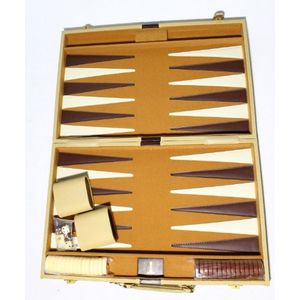Georgian Casuarina Collector's Cabinet on Stand
You must be a subscriber, and be logged in to view price and dealer details.
Subscribe Now to view actual auction price for this item
When you subscribe, you have the option of setting the currency in which to display prices to $Au, $US, $NZ or Stg.
- Gallery - On furniture, a gallery is a small upright section, frequently pierced and decorated, around the tops of small items of furniture, such as davenports, side tables, and so forth. Galleries are made in brass or bronze,and be fretted, pierced or solid timber. A three-quarter gallery is one that surrounds three of the four sides of a table, desk or other top.
- Pierced Decoration - Ornamental woodwork with part of the background cut through and removed to produce an open-work pattern.
- Georgian - As an English stylistic period, Georgian is usually taken to cover the period from George I (1714) to the Regency of Prince George (1811-20), although the period from 1800 to 1830 is sometimes designated as the Regency period. During the Georgian period the great English cabinetmakers and designers such as Chippendale, Hepplewhite, Adam Sheraton etc., were all active.
Therefore there isn't a single 'Georgian style' as such and to say something is 'Georgian', usually means it was made between 1714 and 1830. This assumes we discount George V and George VI, both being from the 20th century.
The styles popular at the time of each reign were:
George I (1714-1727) saw out the last years of the Baroque period.
George II (1727-1760) reigned during the Rococo period.
George III (1760-1820) saw the last gasp of the Rococo, all of the early Neo-Classic 'Adam style' and most of the later neo-Classic 'Regency style'.
George IV (Prince Regent 1820-1830)encompassed the last of the 'Regency' style.
William IV's reign (1830-1837) was something of a no man's land (stylistically) and he wasn't a 'George' anyway. He covered the last glimmerings of 'Regency' and the start of the 'Victorian' style. - Casuarina - Casuarina, is also known as beefwood (because of its appearance) she-oak, swamp oak, river oak, forest oak and Botany Bay wood. It is a native Australian hardwood, red brown in colour with dark flecks.
- Castors - Wheels, fitted especially to chair legs, couches, tables and some smaller pieces of furniture, to enable them to be easily moved about. The earliest castors were of brass, with shanks fitting into the base of the leg, and the wheels often made of leather. In the late 18th century, brass 'bucket' or 'cup' castors were introduced, either rounded or square, fitting directly over the end of the leg and held in place with screws. The wheels were generally solid brass. Bucket/cup castors continued in use throughout the 19th century and indeed are still made today. In the later 19th century wheels were sometimes made of wood, china, either white or brown, and sometimes of steel.
- Provenance - A term used to describe the provable history of an antique or work of art, and thus an additional aid to verifying its authenticity. Provenance can have an inflating effect on the price of an item, particularly if the provenance relates to the early settlement of Australia, a famous person, or royalty. Less significant are previous sales of the item through an auction house or dealer.
This item has been included into following indexes:
Visually similar items

Timber dolls house, 70 cm wide, 76 cm high

A pokerwork decorated fire screen, the rimu screen with a wide diagonal band to the front, with yellow and red roses and leaves, inscription to the reverse. 75 cm x 80 cm

A backgammon set, faux leather, attache-style case, 5.5 x 45 x 28 cm. Provenance: The collection of the late Dr Thomas James Valentine

Canteen of silver plated flatware, service for twelve in 'Kings' pattern, comprising dinner and luncheon knives and forks, fish knives, fish forks, soup spoons, fruit knives and forks, eleven dessert knives, dessert forks, dessert spoons, pastry forks, tea
